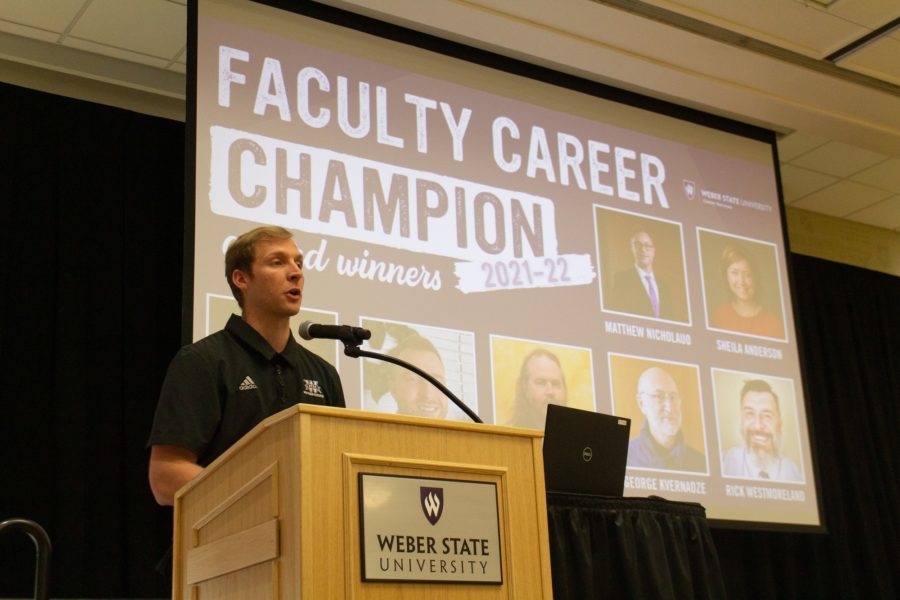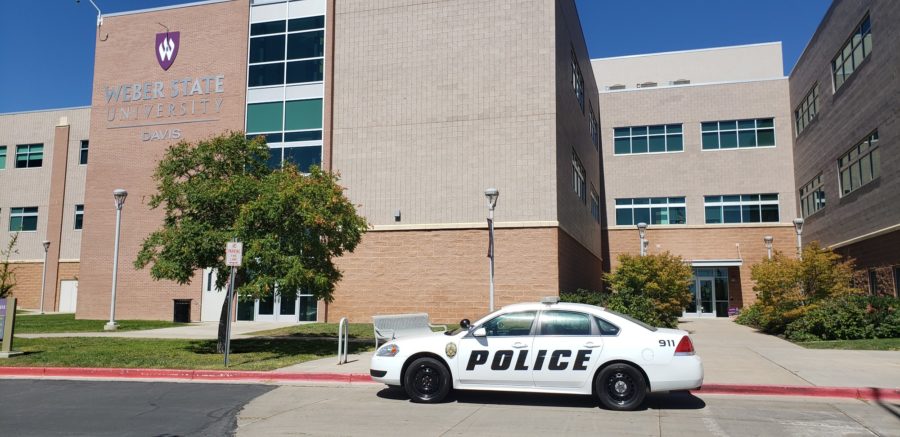[media-credit name=”McClatchy Tribune” align=”alignnone” width=”300″] [/media-credit]The Weber State University communication department is integrating social media into its curriculum due to the rise of social media into virtually every aspect of an individual’s life. The change stems from the demand for savvy social media workers to effectively communicate with the new generation.
[/media-credit]The Weber State University communication department is integrating social media into its curriculum due to the rise of social media into virtually every aspect of an individual’s life. The change stems from the demand for savvy social media workers to effectively communicate with the new generation.
Most recently, a course has been developed for public relations majors entitled “Public Relations in Social Media.”
Howard Noel, a former assistant professor and advisor of public relations, and Mukhbir Singh, an assistant professor and advisor of public relations, began creating the new course last academic year that would focus more on social media in communications.
“What we are trying to do as a department is trying to see how we can integrate social media into other parts of the curriculum,” Singh said.
The communication department has several majors and many emphases within each major that are slowly beginning to integrate with social media. Randolph Scott, chairman of the communication department, said the department has begun and will continue to integrate social media aspects into other areas as it becomes more of a focus.
“Three places where social media is having the most impact in the outside world is public relations, journalism and digital media,” Singh said. “That’s where we are getting into social media first because in obvious ways, news gathering and dissemination model is changing.”
Kathy Edwards will be the first instructor of the new course to be taught this coming spring semester and is still continuing to develop the course and determine what will be included.
“I have a lot of ideas in my mind of things I want to include,” Edwards said. Several other institutions have begun teaching this course and Edwards explained that she is looking at other institutions to determine what they are teaching. She said she knows she wants the class to be more about social media as a communication tool.
“I am going to broaden it out a little bit more because I would like to make the course available for any student in the communication department,” Edwards said.
Other courses have also been developed in light of this trend, including Drew Tyler’s new class, “Essentials of Digital Media,” which looks at actually creating digital media that can be used on social media sites. Edwards’ course will focus more on how to use video and other interactive content rather than creating the content.
“It has only been recently that I have begun using social media or understanding it,” said Cade Lubeck, a communication public relations junior. “Most of my courses are teaching different aspects of social media and how each part of communication can benefit from it, which has been interesting.”
Through the current communication courses, specifically in public relations and journalism, the department tries to emphasize that social media is not the only means of communication.
“Social media is in addition, but not a replacement of traditional media. It has become an add-on, not a substitute,” Singh said.
Singh explained that social media is a medium that isn’t very easily understood and is continually changing at this point, creating a challenge in keeping up for the communication department.
“I think every student should have a basic understanding of the business/professional uses of social media,” said Alex Lawrence, vice provost of innovation and economic development. “Simple way to think of it: If you wouldn’t put your face and name on a billboard on I-15 next to one of your updates, then don’t do it.”
Students are currently being taught how to begin blogging and using social media effectively in intro-level courses in hopes to create good writers.
“We might be going a little slow. In the outside world, it might be going very fast and moving in different directions,” Singh said. “We need to educate ourselves before we disseminate the information to you as students.”
Courses and course curriculum take time to develop as explained by Singh, and he said the department wants to ensure that what is being taught is helpful, accurate and helping to place students into jobs.
“It makes sense to weave social media into almost every course in the department,” Edwards said. “There might even come a day that we don’t even have a course called ‘PR in Social Media’ because social media is woven through the whole department.”
For more information about the communication department or these classes, students can contact the department at 801.626.8924 or email its secretary at [email protected].













